Here’s Why Saab’s Gripen E Fighter’s Wing Suddenly Grew In Size
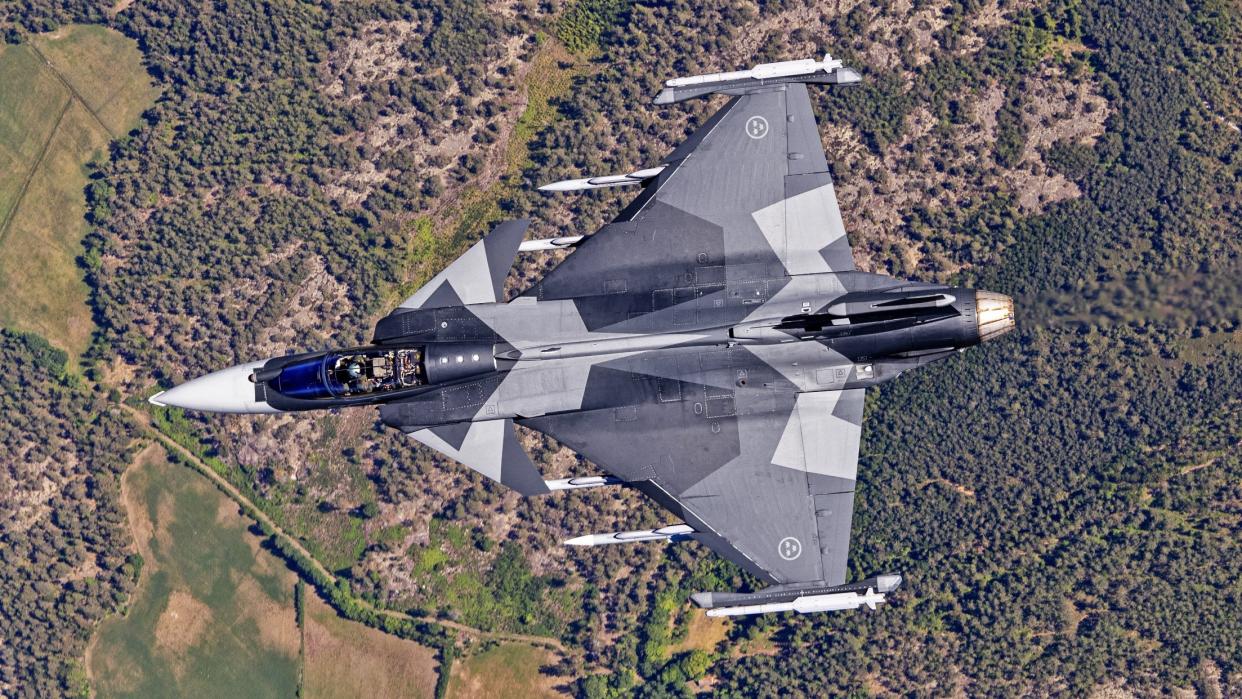
Saab’s Gripen E multirole fighter has been chalking up some milestones of late, including the delivery of a first series-produced aircraft to the Swedish government, for pre-service tests. Intriguingly, one of the jets has also begun to sport a revised wing planform, with additions suddenly appearing on the trailing edge of one of the prototypes, resulting in a wing of overall greater dimensions. The War Zone spoke to Saab to find out more.
The revised Gripen E wing was not formally announced by the company — so far, at least. However, in recent official photos released of Saab E serial 6002, it’s quite clear that additional surface area has been added to the wing, resulting in a more trapezoidal look, rather than the previous cropped delta. Some observers have even compared the new appearance to Saab’s classic Cold War-era Viggen fighter, with its big canard/double-delta configuration.
https://www.twitter.com/Fighterman_FFRC/status/1715624950533706135?s=20 https://www.twitter.com/GripenNews/status/1715668156964860253?s=20
The revised planform appears to have been achieved by replacing the original inboard and outboard elevons — the trailing-edge control surfaces that combine the functions of the elevator and aileron — with larger versions. That might seem as a quick way to increase wing area, but it will also have required extensive testing and modifications to the flight-control system.
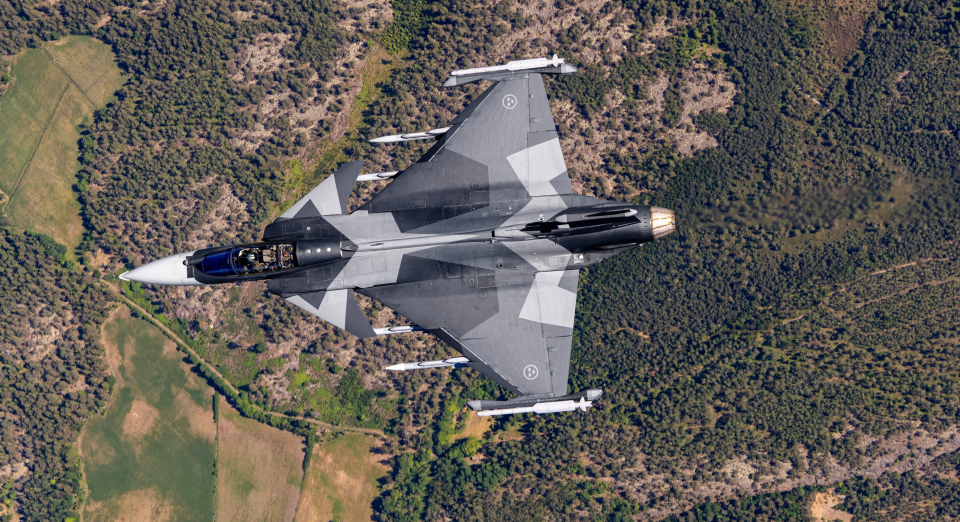
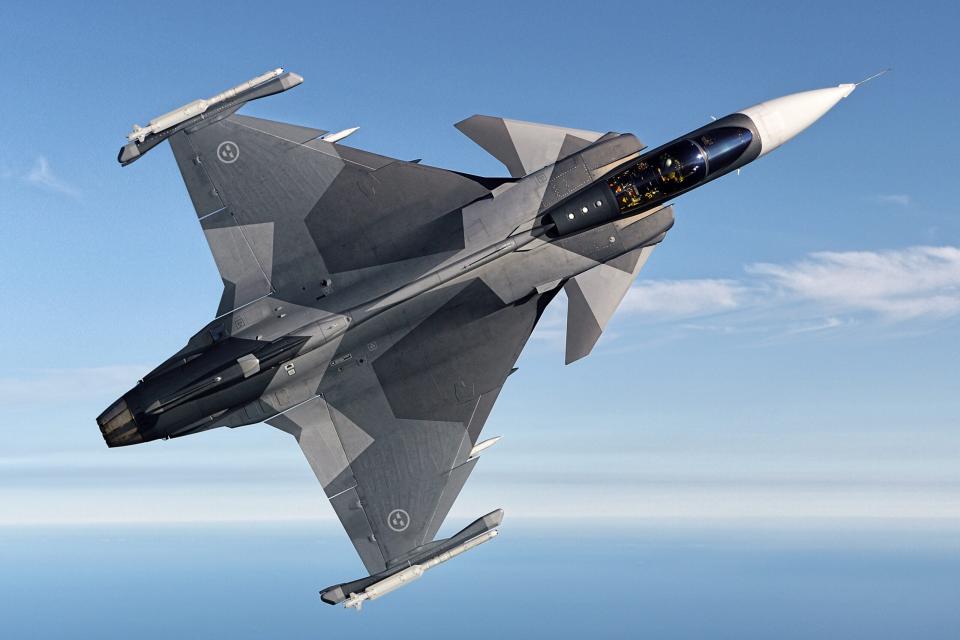
Saab’s Johan Segertoft, head of the Gripen business unit, explained exactly why the changes had been made:
“At an early stage in the development process, an opportunity was identified to improve Gripen’s heavy load-carrying capabilities, as a clear benefit to future operations. A decision was made to implement this enhancement as quickly as possible. We have made updates to the software and some modifications affecting canard and elevon surfaces. These changes bring immediate benefits, prove our ability to reliably deliver growth, and consistently improve aircraft’s potential for the future.”
While Segertoft mentions changes to the canard foreplanes, these are not immediately obvious based on the photos released so far.
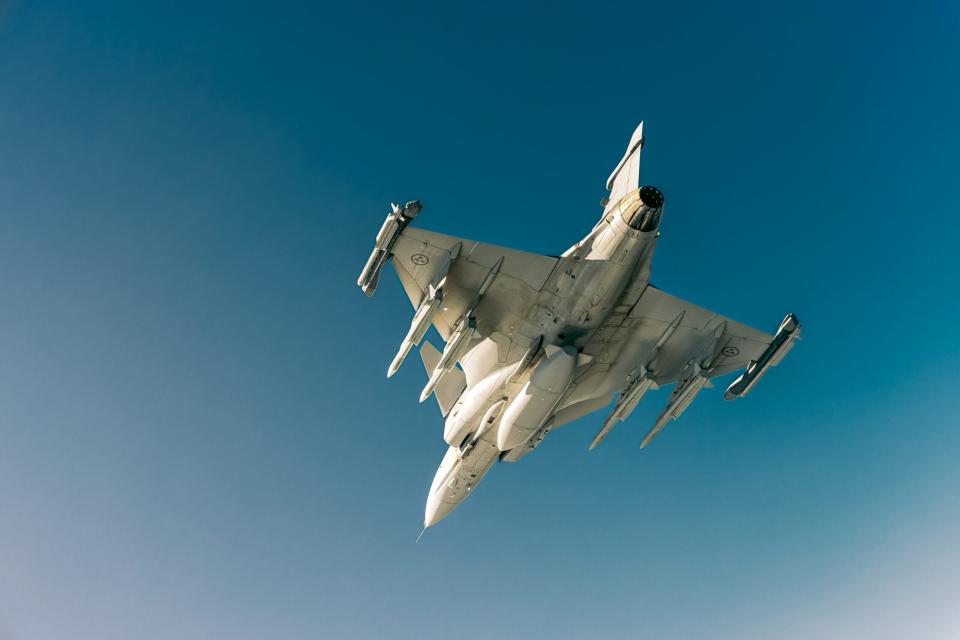
Segertoft continued: “The cornerstone of the Gripen design concept is its ability to adapt rapidly and effectively to changing needs. We continue to enhance the aircraft in ways that can be seen and not seen, as we incorporate new technology and new requirements. Fighter aircraft must be able to evolve quickly, effectively, and affordably to meet the needs of their users. As an example, Gripen E’s performance envelope has now been enhanced and further expanded through an increased ability to integrate heavier and more complex loads to meet future mission requirements.”
While the revised wing may have only recently been identified, the idea has been around for a while, Segertoft confirmed.
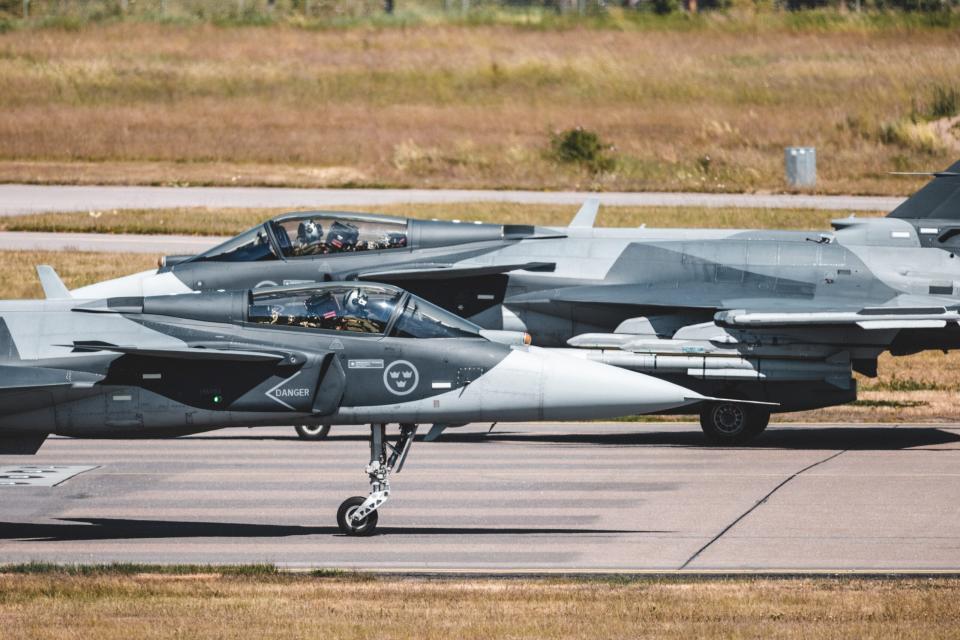
“The feasibility of this enhancement was identified in the early stages of Gripen E development using Saab’s model-based design techniques. Further exploration in the early trials program underlined the benefits for future operations and in 2021 it was decided to make these improvements to the baseline design.”
The first aircraft with the revised wing configuration took to the air in the second half of 2021. As of today, there are 16 Gripen E fighters flying in Sweden and Brazil — the Latin American nation is the first and so far only export customer for the jet and has also inaugurated a domestic production line, which will build 15 of the 36 aircraft currently contracted to the Brazilian Air Force.

According to Segertoft “The new design features have already been added to some of these aircraft and successful flight trials have been completed.” Segertoft also confirmed that the modification “will become the standard configuration going forward in all production aircraft for Sweden, Brazil, and other customers.”
As to the benefits that the new wing will bring, Saab has emphasized that it will boost the Gripen E’s ability to carry heavier loads, in the form of external weapons, fuel tanks, and other stores. For a smaller fighter like the Gripen, this is clearly a considerable bonus, although it’s not clear at this point how it will change the kinds of loads that it can carry. It’s worth noting, too, that the Gripen E can already carry some fairly heavy loads, including up to four of the big Saab RBS 15 anti-ship missiles, although this configuration has not so far been seen in the air. Other heavy loads include up to nine air-to-air missiles, or 16 Small Diameter Bombs, albeit at the expense of external fuel.
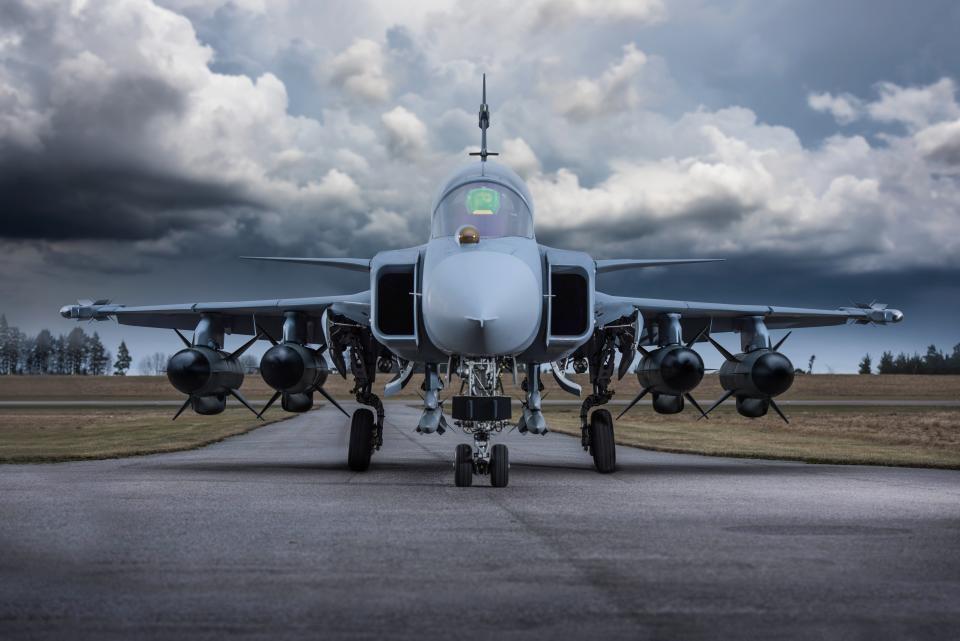
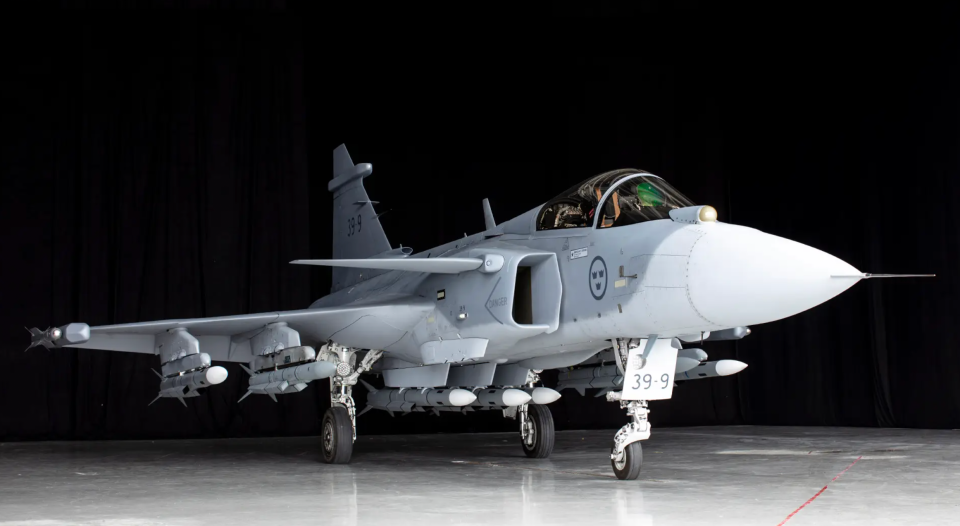
Conceivably, the heavier load-carrying capabilities could see the Gripen E be adapted to use different kinds of pylons or stores, allowing a greater number of weapons to be fitted simultaneously. With a total of 10 hardpoints already available, there would certainly seem to be some options in this regard.
Expanding the combat potential of the Gripen E is also in keeping with recent Swedish defense policy, which has seen a renewed emphasis on its fighter fleet as the country grapples with a further deterioration in regional security policy including increasing Russian belligerence. As part of this, as well as joining NATO, Sweden has decided to retain its older Gripen C/D fleet for longer, as well as procuring 60 new-generation Gripen Es. The Gripen E is a substantially different aircraft — as you can read about here.
https://www.youtube.com/watch?v=mxtVVa0_8RQ
At the same time, the effect that the new wing has on the maneuverability of the Gripen E should not be disregarded. A wing with a larger area certainly translates into improved flight performance at low speeds — especially useful for within-visual-range combat. Overall, larger elevons should mean that the Gripen E has improved pitch control and roll control, fundamental to optimizing agility. The change also will likely have benefits for general handling at the lower end of the speed spectrum, including takeoffs and landings, especially with heavier loads.
Again, it should be noted that low-speed handling and maneuverability is not the key driver behind the Gripen E’s revised planform, but it would certainly appear to be more than a useful byproduct.
It’s also worth recalling that Eurofighter also offers a package to improve the heavy load-carrying capabilities of its Typhoon fighter. The Aerodynamic Modification Kit (AMK) involved adding fuselage strakes, leading-edge root extensions, and increased-area elevons, increasing the maximum lift created by the wing by a reported 25 percent.
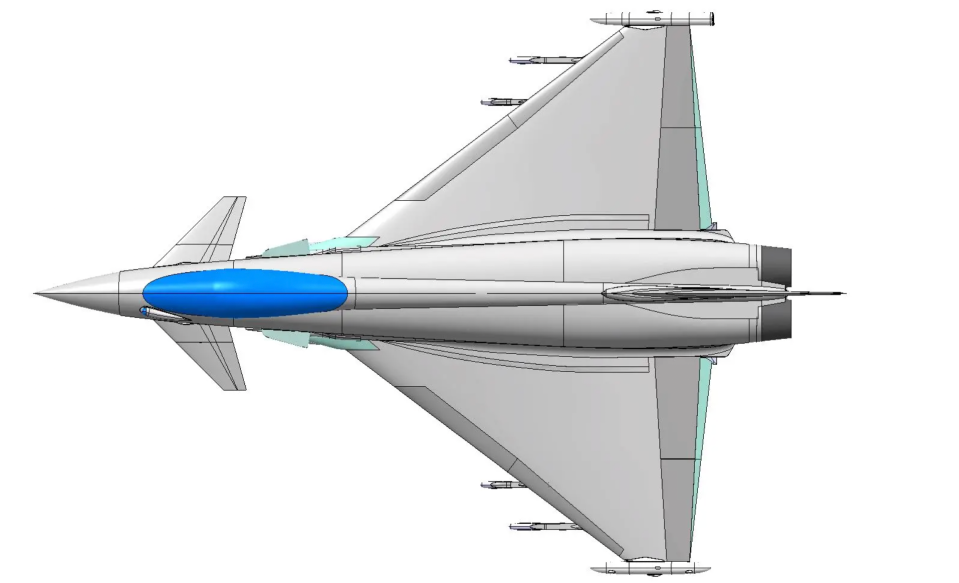
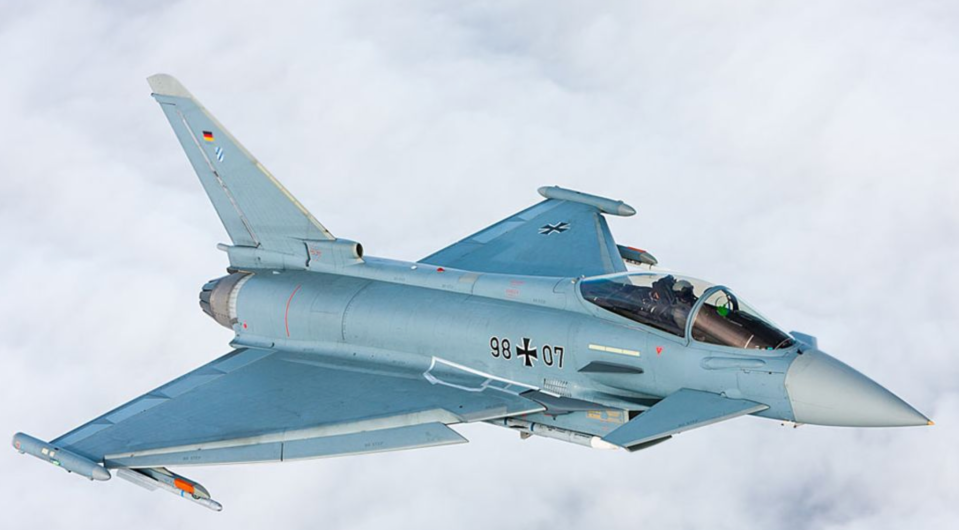
“It’s about generating even higher longitudinal stability of the aircraft’s aerodynamics to new potential weapon integration,” said Airbus’ Head of Combat Aircraft Systems Kurt Rossner. For a Typhoon, this would mean that even a heavily loaded jet would enjoy increased turn rate, tighter turning radius, and improved nose-pointing ability at low speed.
So far, however, no Typhoon customer is known to have opted for the AMK modifications.
For the Gripen E, on the other hand, the new-look wing planform is now set to be fitted as standard to the jet. It will certainly be interesting to see how its operators — for now, Sweden and Brazil — will exploit the enhanced capabilities that this modification promises.
Contact the author: thomas@thedrive.com

